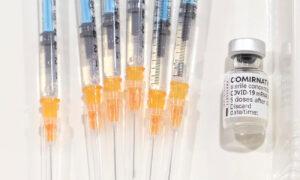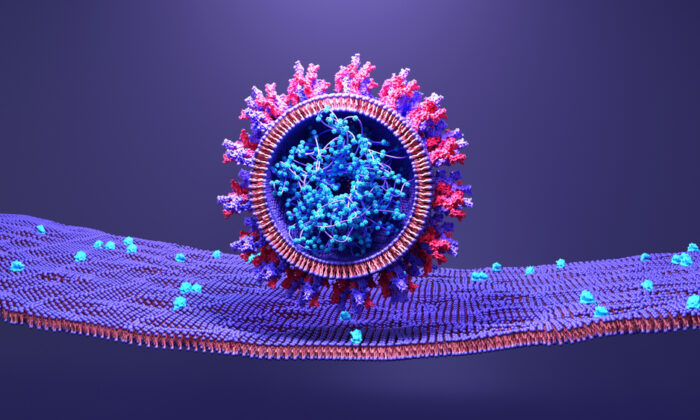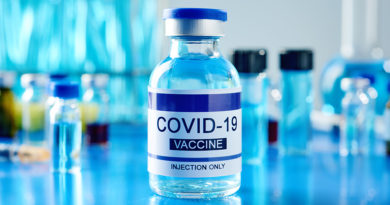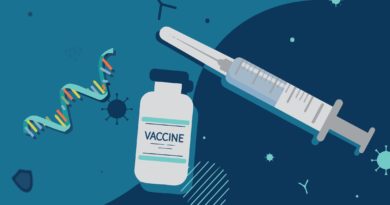US-China Researchers Proposed Engineering SARS-CoV-2-Like Viruses Before the COVID Pandemic
By the time the research grant proposal was submitted to DARPA, an American scientist had already created ‘SARS-like chimera’ viruses.
Scientists from the United States aimed to work with the controversial Wuhan Institute of Virology (WIV) to create new coronaviruses similar to the COVID-19 virus in 2018, according to newly released documents.
“The genome of SARS-CoV-2, the virus that causes COVID-19, matches the viruses described in the research proposal.” For instance, the COVID-19 virus has a furin cleavage site positioned in its spike protein at the S1/S2 junction.
Spike proteins are found on the surface of the COVID-19 virus and facilitate the microbe’s entry into healthy cells. This spike protein is cleaved or split into two parts—the S1 and S2 subunits.
Furin cleavage site refers to a sequence of 12 nucleotides in the COVID-19 virus foreign to the coronavirus class to which SARS-CoV-2 belongs. None of the several other viruses in the class have this sequence. The furin cleavage site attracts the furin protein, which makes the virus more infectious.
The presence of this foreign furin cleavage site is controversial since it could mean the virus was engineered in a lab where this sequence was inserted into the COVID-19 virus. This essentially negates the wet market theory propagated by the Chinese Communist Party (CCP) and echoed by authorities.
“The furin cleavage site supercharged the virus into the worst pandemic pathogen in a century. Virologists have yet to identify one in any other related coronavirus.”
U.S. Right to Know points out that scientists in the DEFUSE proposal had also proposed to insert furin cleavage sites at the S1/S2 junction of the coronaviruses’ spike protein, “precisely where the furin cleavage site in SARS-CoV-2 is found.”
- The proposal intended to assemble viruses in six segments. The COVID-19 virus can also be divided into “six contiguous genomic pieces,” the nonprofit noted.
- DEFUSE aimed to identify coronaviruses up to 25 percent different from the SARS disease. SARS-CoV-2 is within a 25 percent genetic variation range from SARS.
- When the COVID-19 virus first appeared, it came across as highly infectious even though it had not evolved much in humans. The receptor binding domain of the virus seemed to be “finely tuned” for human ACE2 receptors but did not exhibit much genetic variation, thus making it difficult to prove that it was of natural origin. The ACE2 receptor is present in several cell types and tissues in the human body and acts as a cellular doorway for the COVID-19 virus to infect people. “The documents confirm the scientists working with the Wuhan lab sought to select for receptor binding domains that bind well to human ACE2 in their research,” the nonprofit stated.
New Spike Proteins
The DEFUSE grant proposal was led by Peter Daszak, the President of the New York-based nonprofit EcoHealth Alliance, and was submitted to the U.S. Defense Advanced Research Projects Agency (DARPA), which ended up rejecting the project.
The documents also revealed that an American virologist who worked with the WIV intended to engineer new spike proteins. “Language in the proposal indicates this work may have involved unpublished viruses, generating unpublished engineered spike proteins,” U.S. Right to Know said.
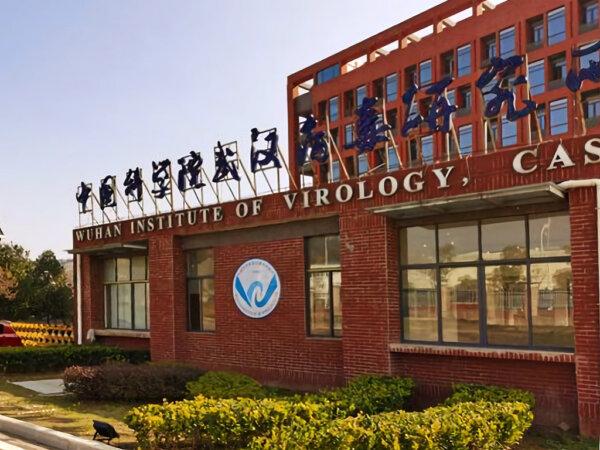
“This American virologist, University of North Carolina Prof. Ralph Baric, was set to engineer twenty or more ‘chimeric’ SARS-related viral spike proteins per year of the proposal and two to five full-length engineered SARS-related viruses.”
Earlier documents obtained by the nonprofit revealed that some of these experiments would be conducted in secret at the WIV at a lower biosafety level than what was mentioned in the grants to save costs.
A few virologists and the U.S. National Institutes of Health (NIH) have argued that the DEFUSE collaboration only planned to engineer viruses that are already covered by existing literature.
However, the documents “reveal that the scientists planned to use new reverse genetics systems and test viruses in vivo—in other words, to engineer live novel viruses.”
Some of the documents also describe the viruses to be studied under the program as posing “a clear-and-present danger of a new SARS-like pandemic.”
While the documents do not provide detailed information on how SARS-CoV-2 could have been generated in a lab, they detail the scientists’ “interest in working with viruses precisely like SARS-CoV-2.”
It is unknown whether DEFUSE was funded via other means after DARPA rejected it. U.S. Right to Know claims that Mr. Baric had already created spike proteins when the proposal was submitted to the agency.
One of the notes obtained by the group said—“RB [Ralph Baric] has already generated SARS-like chimeras w/ RBD [receptor binding domain] from group of bat viruses called 293 (for S1) which is 20 percent different than epidemic strains, and S2 region from HK3 which is 20 percent diff.”
The nonprofit suggested that some of the data relevant to uncovering details about the COVID-19 pandemic may not only be found in China but also in the United States.
US Collaborators
Commenting on the documents released by U.S. Right to Know, Alina Chan, a scientific advisor at Broad Institute of MIT & Harvard, said that the expose tells “us that we need to get all of the exchanges between the Wuhan Institute of Virology and its US collaborators in 2018 and especially 2019—the year of the pandemic.”
“What we need to find out is whether WIV shared the discovery of SARS2-like viruses with EcoHealth/Baric and how this influenced the way they thought about the experiments proposed in defuse. Did they find the precursor and decide it was optimal for testing furin cleavage sites?”
The research involved conducting “field studies in China to obtain high-quality samples from bats and identify, characterize and isolate known and novel coronavirus,” according to the grant proposal.
“We will analyze the patterns of coronavirus transmission among bats and other wildlife and the risk of spillover to humans.” Some of the grants went to WIV.
According to data from Worldometers, there have been more than 702 million COVID-19 cases worldwide and 6.97 million deaths as of Jan. 19.
The United States accounted for over 110 million infections and more than 1.19 million deaths. Roughly a billion vaccines have been distributed in the country.
This article has been archived for your research. The original version from Epoch Times can be found here.

